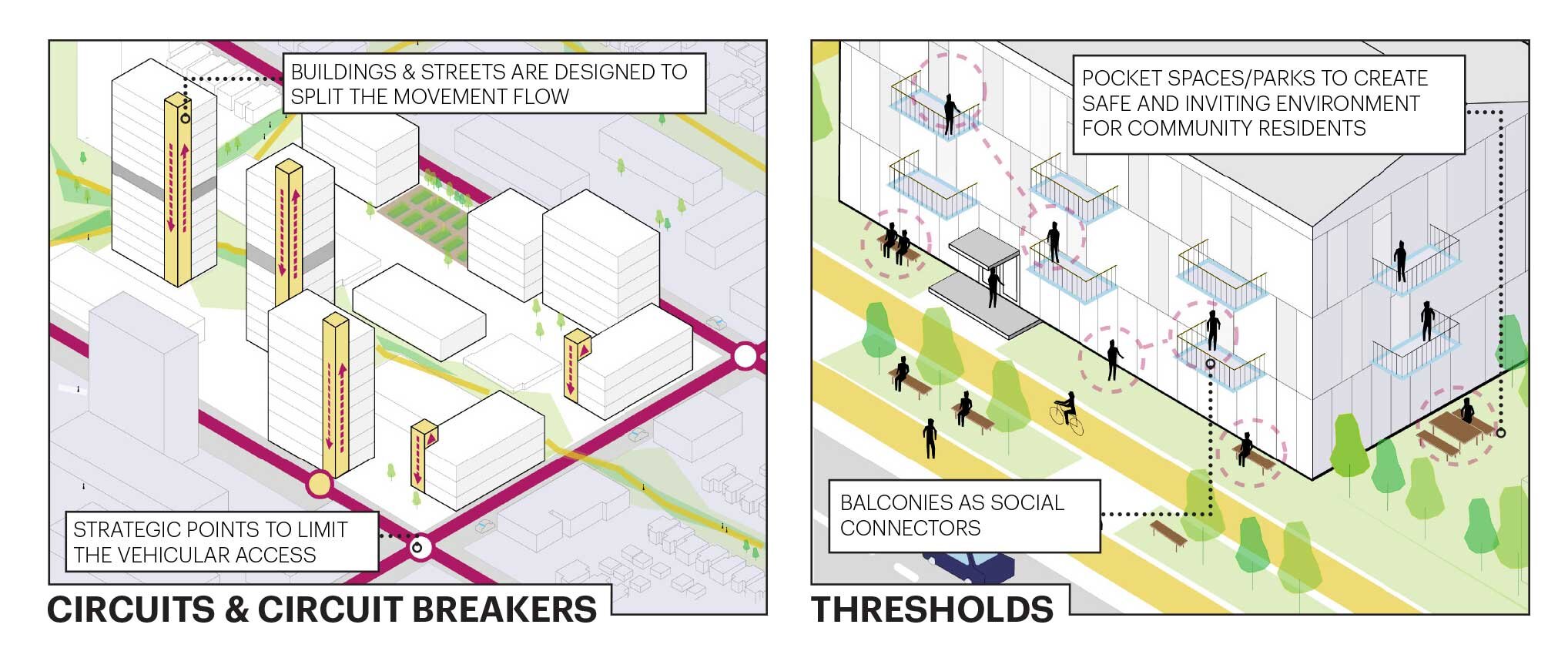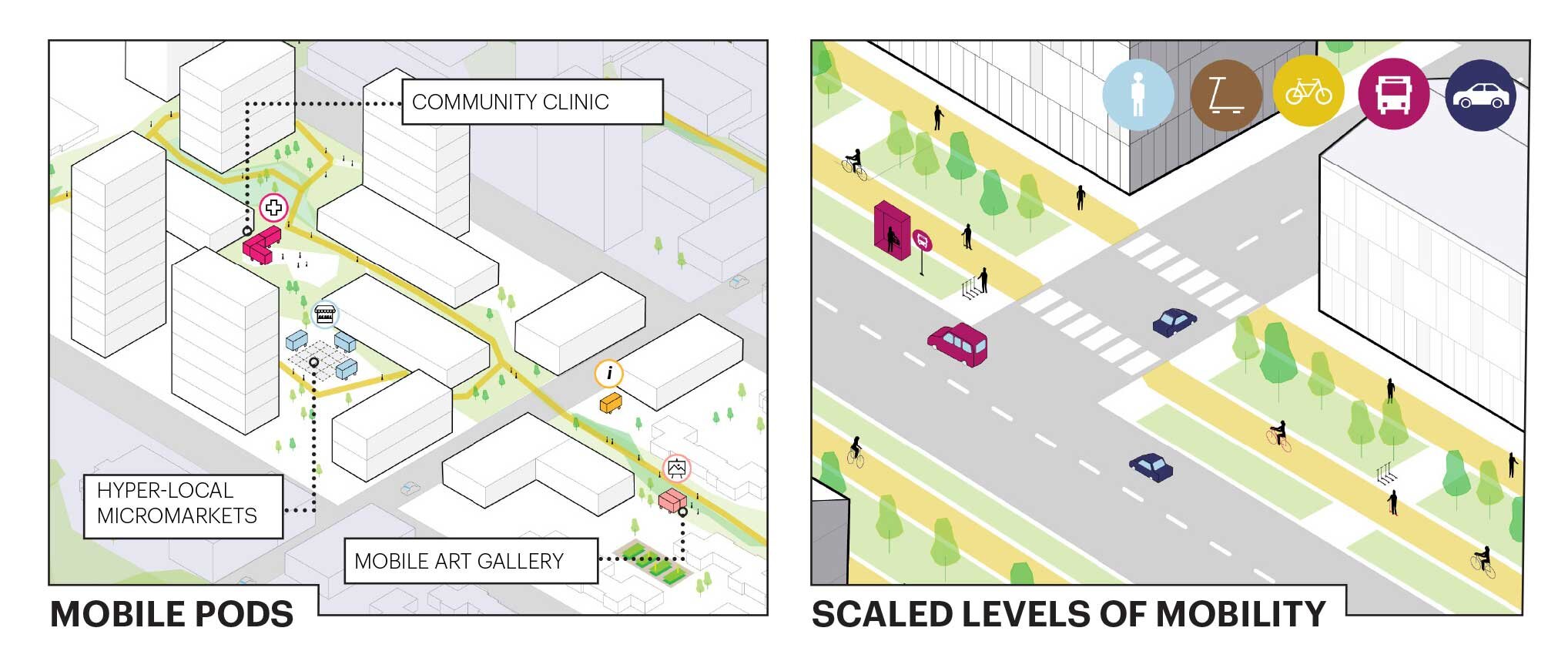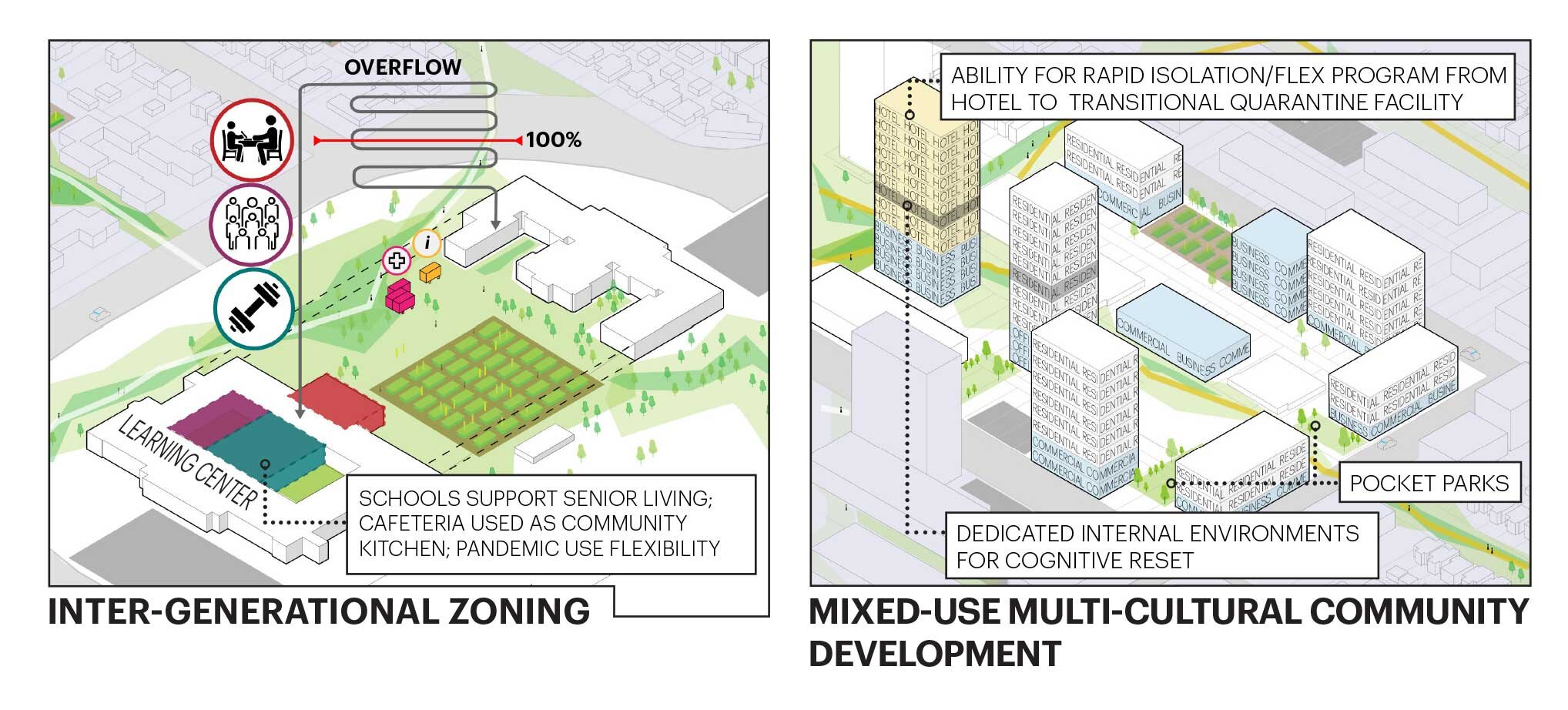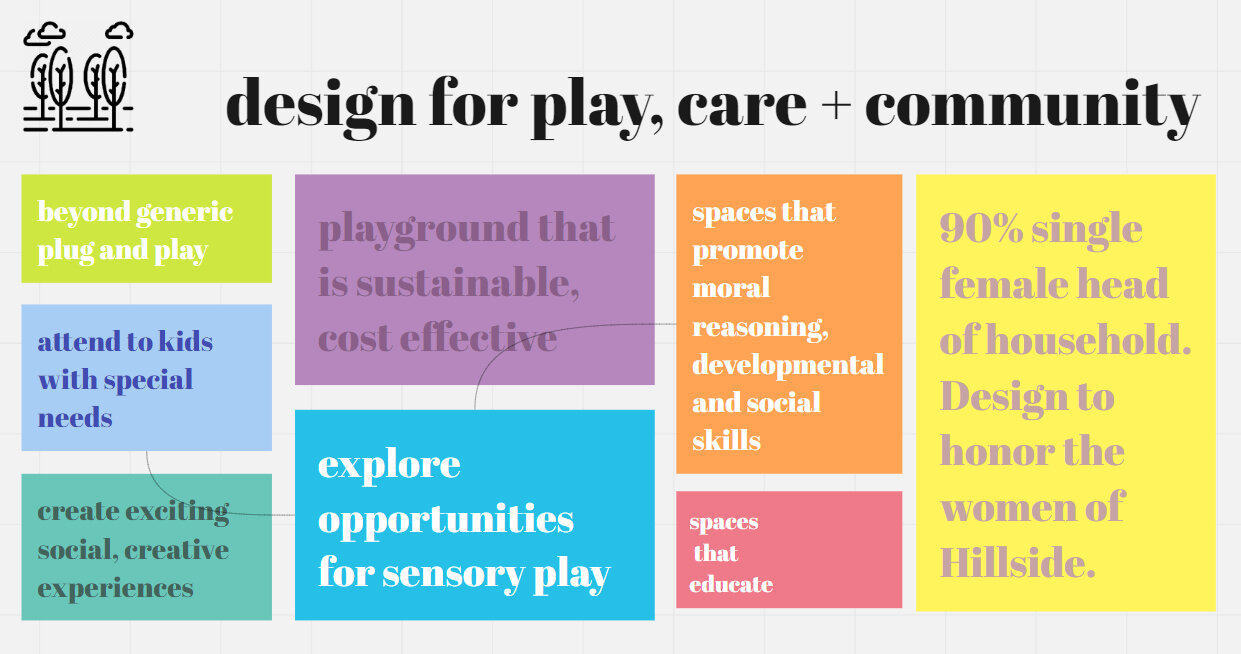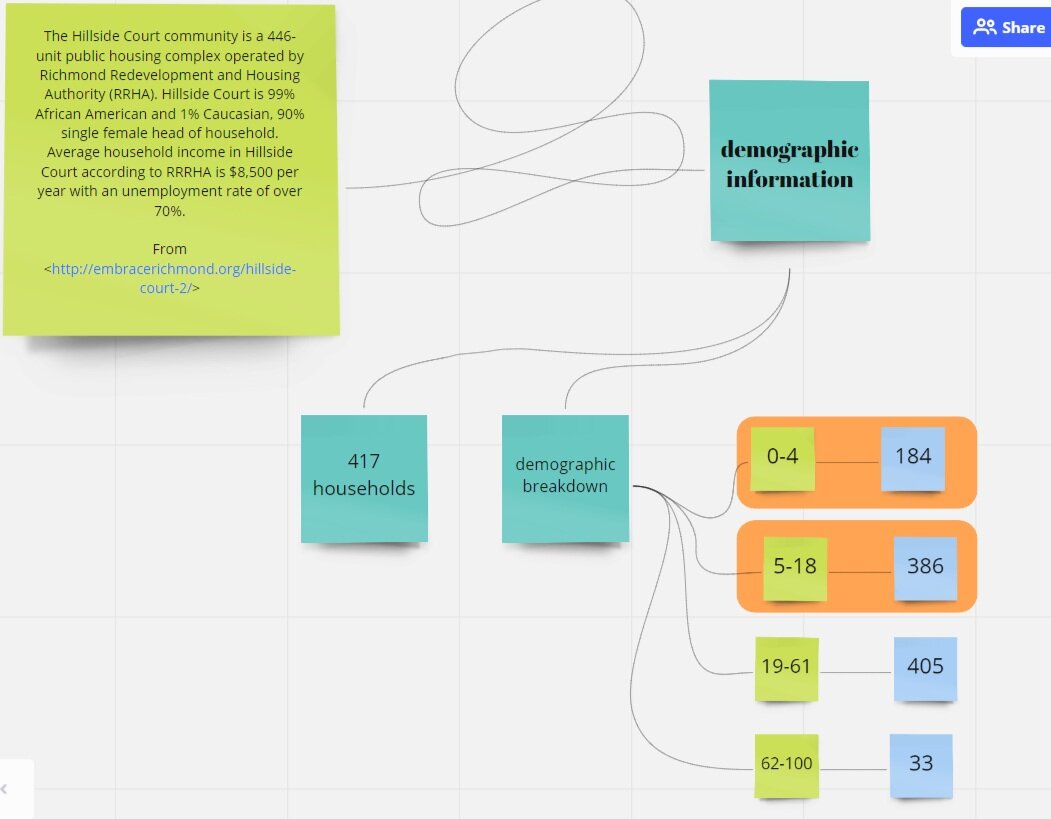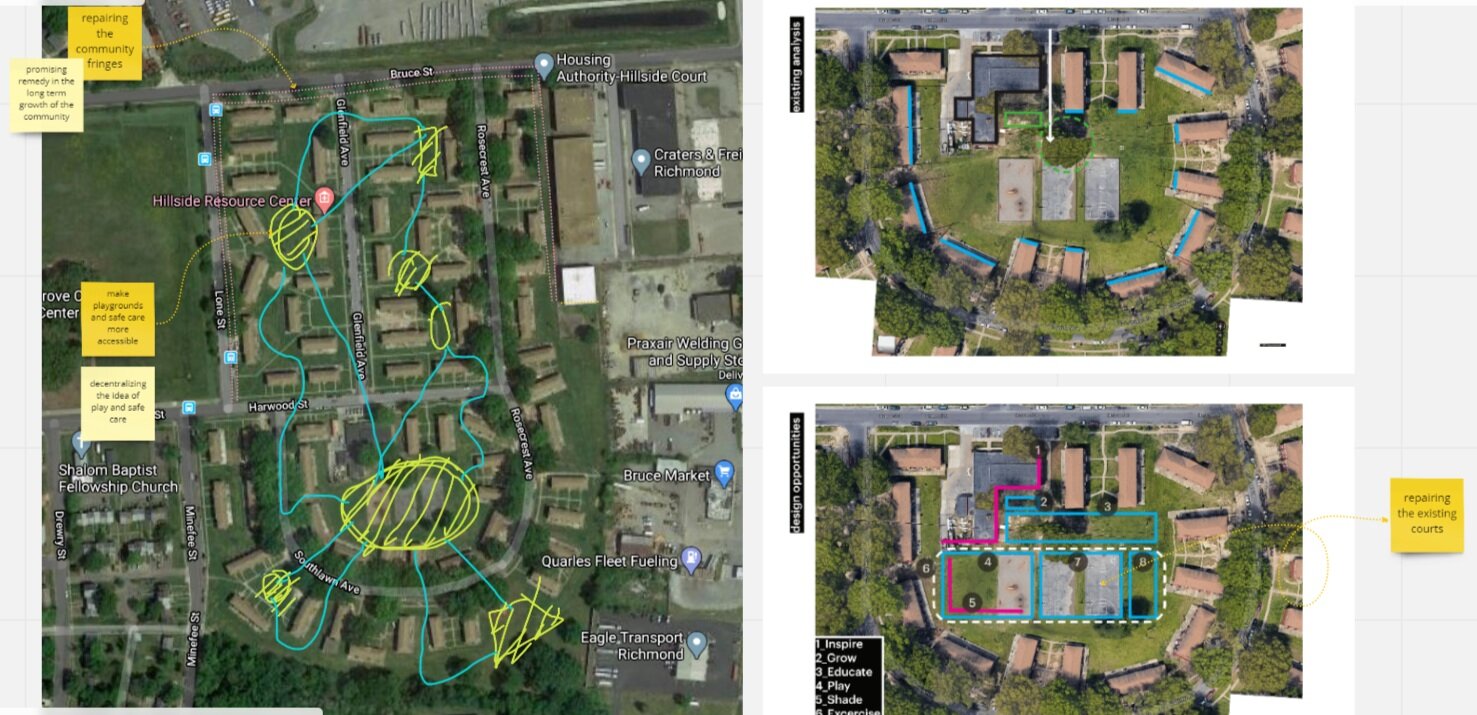Community-BLOC: How Communities Become Gender-Equitable Villages of Care
Inspired by the African proverb, “it takes a village to raise a child”, we endeavor to understand and demonstrate how communities should be designed to better support the needs of women and families to increase women’s power and influence.
There is a lack of awareness about how women hold the majority of the burden of unpaid care work (70%). Gender equality at work or home cannot be achieved without picking apart and fundamentally re-constructing expectations of care in relationships, families, work, and communities.
During COVID, it has become evident that as a country we are not able to mobilize collectively, and certainly not as a collective that protects our over-stressed or vulnerable populations. Moms with young kinds in the COIVD era are CEOs, teachers, cooks, janitors, housekeepers, care providers for their kids and often parents, and mental health professionals, all in the same day. In a recent report, McKinsey makes the argument there’s a risk that progress could go into reverse which would hold back not just gender equality but also the global economy.
With an innovative research coalition with partners already engaging community members in designing spaces, we are re-imagining the process of building resilience and inclusivity into the foundation of a community’s design.
Our goal is to demonstrate what equitable design of space and systems can do for gender equality, instilling support systems and design strategies that will begin to dismantle the barriers that hold women back.
Our hypothesis is a simple one - a community that puts gender equality as a foundational purpose, and leverages its spaces and systems to achieve it - can directly impact the unpaid care burden on the women, improve their public perception, and create a healthy, resilient community.
Who We Are
This coalition was born out of a need to do things differently. Dismantling generations of gendered expectations for everyday care work requires an entirely reimagined design process that integrates social and spatial, community-led considerations for how care is central to our lives and our neighborhoods.
Currently a team of four organizations, we are a growing coalition centered around community engagement and co-design. We are uniquely positioned to research the factors impacting women’s unpaid care burden in space and communities, facilitate new ways of engaging communities to understand the networks of care already in place, build capacity and formulate responsive neighborhood design solutions, and measure impact in short and long term.
This coalition is coming together for the first time, to take on the issue of gender equity as a community building bloc, and unpaid care as the very first brick that must be laid to create a foundation of human health and resilience.
If you are interested in joining this coalition, please email admin@cadreresearch.org.
The Center for Advanced Design Research and Evaluation (CADRE)
CADRE is a 501c3 design research entity focused on linking design to outcomes.
CADRE TEAM MEMBERS
Upali Nanda, Tom Harvey, Deborah Wingler, Casey Lindberg, Babak Soleimani, Melissa Hoelting, Aletta Van Der Walt
Atlas of Care
Atlas of Caregiving is a 501c3 not for profit with a mission to transform how we care for ourselves and each other through innovative research, practical solutions, and rich collaborations.
ATLAS TEAM MEMBERS
Rajiv Mehta, Susan Williams
HKS Architects
HKS, Inc. is an architecture firm and signatory of the UN Global Compact.
HKS TEAM MEMBERS
Nick Cooper, Sheba Ross
Storefront Richmond
Storefront is a non-profit in Richmond providing affordable design assistance, community advocacy and youth empowerment.
STOREFRONT TEAM MEMBERS
Bernard Harkless, Nick Cooper, Anya Shcherbakova
Our Approach
We aim to develop a process that engages the community to better understand its assets that could be leveraged and to identify gaps that inhibit gender equity. In understanding and redistributing care throughout the community, we endeavor to help the community redefine their role in the often undervalued care work of women while actively participating in the design of spaces and systems where care for ourselves and each other is central.
Have we considered how the neighborhoods, cities and buildings we design augment the care burden on women and inhibit their voice? A women's care network extends to her parents, her spouse, her children, her co-workers and many more. Yet each person in her care network may live in disparate parts. She has to make daily choices about watching kids, getting groceries, going to work etc. because our system stretches her in multiple directions. Is there an alternative?
Our solution is a four part process that explores the power of place to build caring communities:
Discover: Conduct capacity building research to identify macro factors impacting unpaid care work that inhibit women’s power and influence in our communities
Engage: Engage in “CareMapping” and “Place-Mapping” community engagement workshops to identify gaps in the care networks and supporting places that inhibit women’s power and influence in our communities.
Act: Implement design strategies and built space solutions that attempt to close the gaps identified in Step 2 via an ongoing community redesign project
Impact: Measure and understand the impact of built space solutions on alleviating the unpaid care burden. Increase community engagement in and valuation of required care work.
Closing the gaps between care networks and place networks will alleviate the “stretch” that women experience which hold them back from reaching their greatest potential.
The solution will benefit women with families, children, and elderly in need of care with long term impact on safety, economic parity, and mental health
Key Resources
This selection of resources shares applicable projects and tools from our coalition members. We are learning from and combining our collective expertise to inform this work.
Community-BLOC: A Framework for Healthy and Pandemic-Resilient Communities
Project by HKS, Inc.
The Community-BLOC is a conceptual framework that distills years of research on vibrant and thriving communities, with a prototype neighborhood that can empower the community, create a safe physical and psychological environment, and enable business and life continuity during a pandemic.
Six key principles define the ecosystem that supports business and life continuity.
Net Positive Design Prioritizes Environmental and Social Health
Every Footprint Has a Corresponding Cloudprint
Circuits and Circuit-Breakers Enable Containment and Continuity
Flexible and Mobile Infrastructure Creates Agility
A Mixed-Use, Equitable, Inter-Generational and Inclusive Environment
Health, Housing and Education Form the Cornerstones
These principles are supported by 12 design strategies, visualized below.
This coalition focuses on the gender equity component of Community-BLOC, especially on unpaid care and perception of women.
The Community-BLOC response to the COVID-19 pandemic was recently recognized on the Top 100 longlist in The Pandemic Architecture Competition by Archisearch. Click here to find the full competition entry.
Atlas CareMap
Project by Atlas CareMap
A diagram of relationships, connections and interactions, an Atlas CareMap illustrates the often invisible threads that bind us to others: both those who we are closest to, and those who we may have only a passing relationship with.
The Atlas CareMap shows relationships of care: any sort of relationship you have with another person where you give or receive help, support, or advice. These relationships can be with family, friends, coworkers, neighbors, and even pets. Creating your own Atlas CareMap will help you take notice of these relationships.
The visualization of this information allows community members to better see the people, places and activities that bring or detract from their wellbeing. The process is designed to diffuse across communities, transforming how people care for each other and themselves. When used iteratively, it can help measure and understand the impact of built space solutions and community redistribution of the burden of care.
Hillside Community Care Village
Project by Storefront
The Hillside Community is a 450 unit public housing neighborhood, currently comprised of 99% African American with 90% being single, female heads of household. Having gone through years of violence and poverty, we are looking to help revitalize the neighborhood by first listening to the needs of the community and empowering their voices in shaping their own vision for the future in order to create a safe place to play, learn from one another and take care of each other. Two community engagement workshops have been held to date, and we are now narrowing in on two solutions for a more safe environment for all. The interventions we have dubbed as a “Care Village” would be two fold:
Care + play interventions woven throughout the community giving a sense of safety from your front porch.
A central hub, anchoring these interventions, offering opportunities for learning, teaching, mentoring, caring, and playing, supporting multi-generational and multi-age group learning while empowering women supporting women and older kids supporting younger kids.
The Hillside Care Village would be scalable to other neighborhoods and communities. Care means holds different meaning for us all and how it will be implemented in the community will come out of the continued research and community engagement we do.
Looking ahead, a care space as a policy requirement for multifamily projects could help redefine what is an amenity vs. what is an essential program space – creating community care villages throughout the world.
We continue to work with local leaders and community organizations including Councilwoman Robertson, the Richmond Arts Commission, Groundwork RVA, Richmond Redevelopment and Housing Authority, and the local chapter of AIA.








